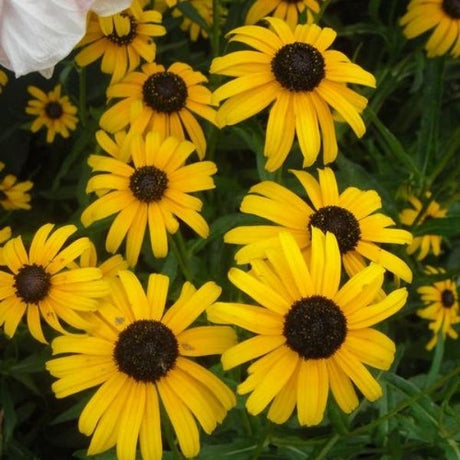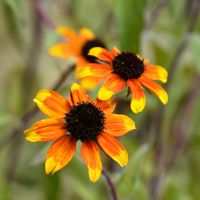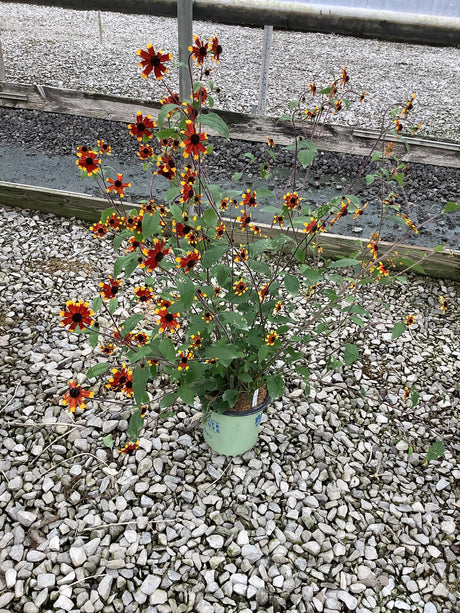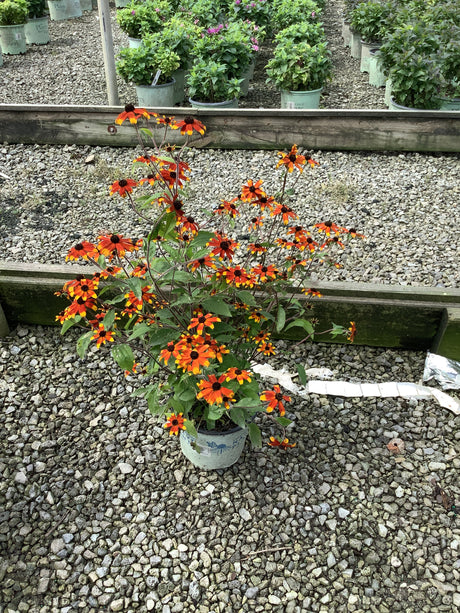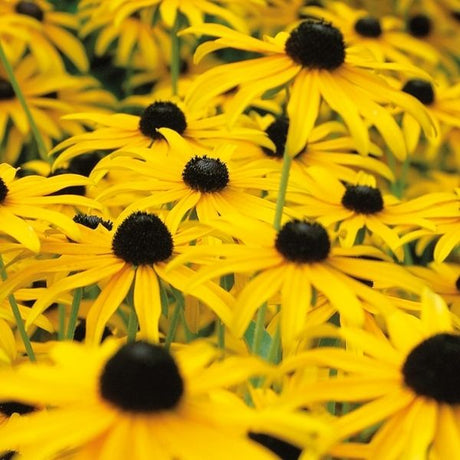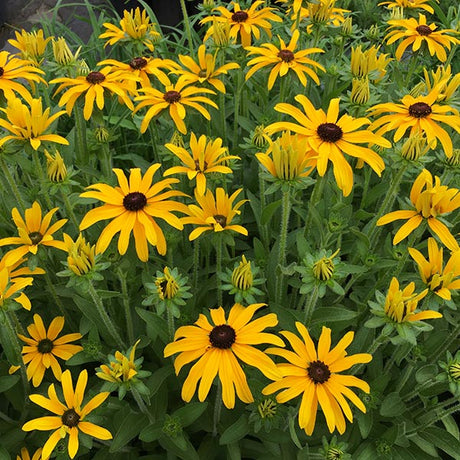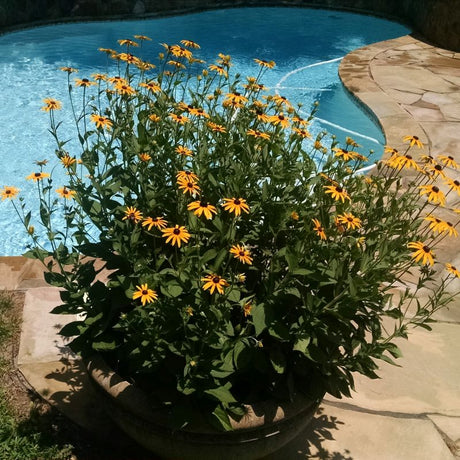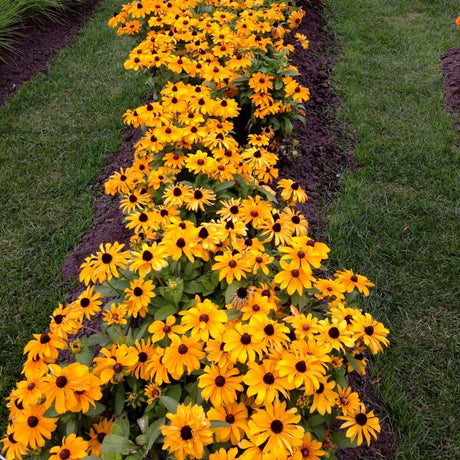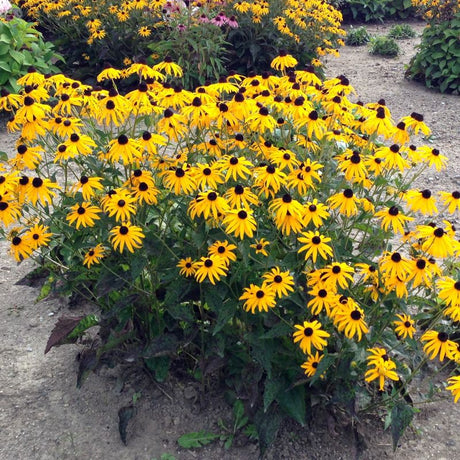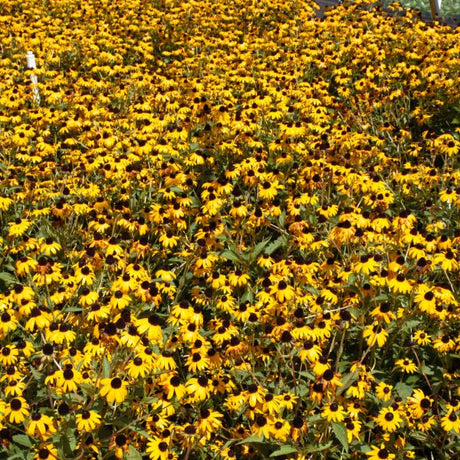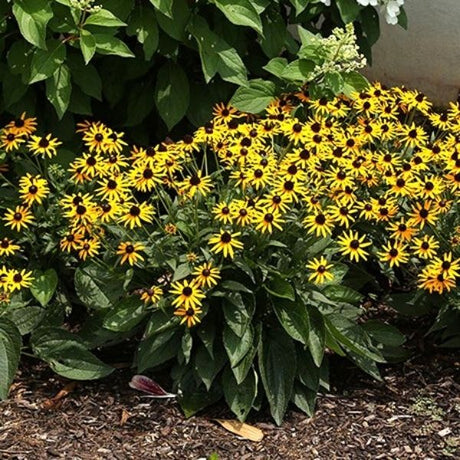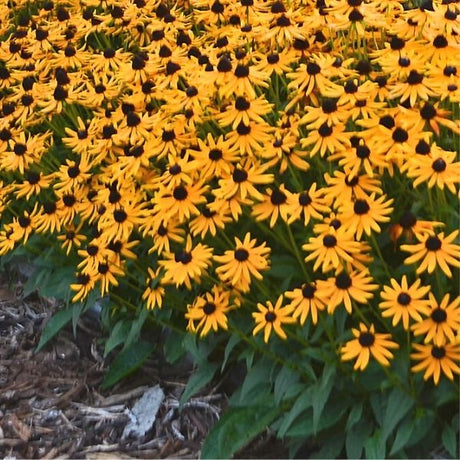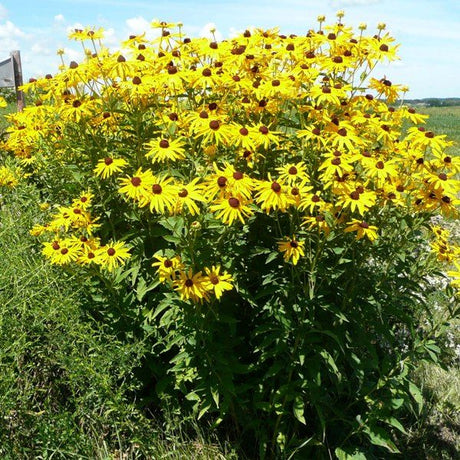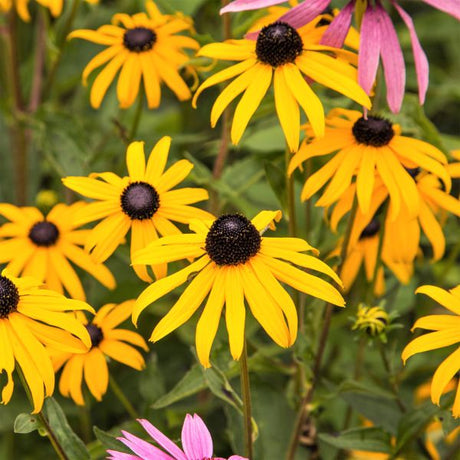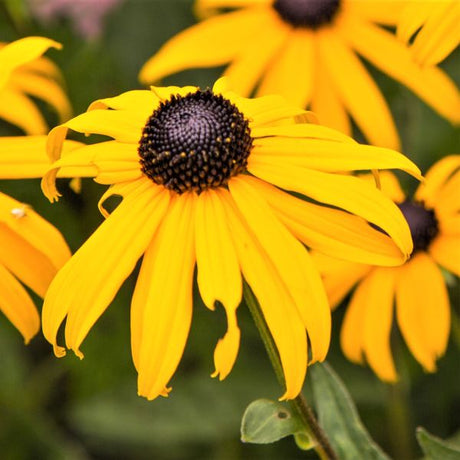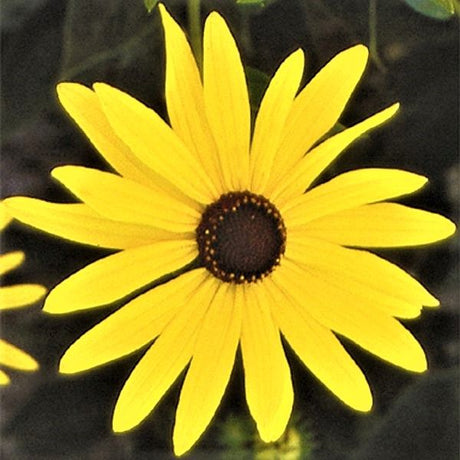Little Suzy Black - Eyed Susan
Rudbeckia fulgida var. speciosa 'Viette's Little Suzy'
Regular price $2966Unit price /UnavailablePrairie Glow Black - Eyed Susan
Rudbeckia triloba 'Prairie Glow'
Regular price $3974Unit price /UnavailableAmerican Gold Rush Black - Eyed Susan
Rudbeckia 'American Gold Rush'
Regular price $4033Unit price /UnavailableGlitters Like Gold Black - Eyed Susan
Rudbeckia x 'Glitters Like Gold'
Regular price $4026Unit price /UnavailableRudbeckia fulgida var. sullivantii 'Goldsturm'
Regular price $2959Unit price /Unavailable- 11% off
Little Goldstar Black - Eyed Susan
Rudbeckia fulgida var. sullivantii 'Little Goldstar'
Sale price $3750 Regular price $4192Unit price /Unavailable - Sold out
Brilliant Black-Eyed Susans at Nature Hills

The Black-Eyed Susan plant (Rudbeckia) is a beloved perennial that lights up the garden from mid to late summer when most plants start to fade. Bright golden-yellow or orange petals encircle rich chocolate-brown centers, adding cheerful color to any sunny spot.
Try the orange-yellow blooms of Deamii Black-Eyed Susan or the fiery bi-color MiniBeckia™ Flame Rudbeckia. These upright, hairy-stemmed plants form neat, mounded clumps of deep green leaves that resist deer, rabbits, and most pests or diseases.
Black-Eyed Susans are hardy and versatile perennials, thriving from chilly Zone 3 to warm Zone 9. They're heat- and cold-tolerant, making them reliable performers for nearly every region.
Pollinator and Wildlife Favorites
Butterflies, bees, and hummingbirds flock to the nectar-rich blooms, especially valuable in late summer when other food sources are scarce. Once the flowers go to seed, the cones become natural bird feeders, attracting Goldfinch, Sparrows, and other backyard songbirds.
Landscaping with Black-Eyed Susans

These drought-tolerant perennials are fantastic for borders, native gardens, and sunny slopes. Use them en masse for a bold display or pair them with other perennials like Coneflowers, Asters, and Milkweed for a naturalized look that supports pollinators all season long.
Compact forms such as Little Goldstar and Little Suzy are perfect for small gardens, containers, and sunny patios. Their long-lasting blooms also make excellent cut flowers for cheerful arrangements.
Rudbeckia are low-maintenance, Firewise, and xeric once established, perfect for rock gardens, roadside plantings, and poor or sandy soils. These sun-loving perennials bring brilliant color to any landscape with minimal effort.
Check out our top 10 Black-Eyed Susan here!
Care & Maintenance

Plant these herbaceous perennials in full sun and well-drained soil. Water regularly during the first year, then reduce once established. Deadhead to encourage reblooming or leave the final flowers to feed birds through winter.
Divide clumps every few years to keep them healthy and prevent overcrowding. If powdery mildew appears, prune back foliage in fall to avoid overwintering fungus (read more on treating and preventing powdery mildew here).
These resilient plants thrive with minimal care, even in challenging soils and climates.
Read all about planting and caring for Black-Eyed Susan in our Garden Guide!
Brighten Your Garden With Rays of Sunshine!
Add long-lasting color and pollinator power with Black-Eyed Susans from Nature Hills Nursery. Family-owned since 2001, we ship high-quality plants backed by our Product Guarantee. Visit our Planting Guide and shop the full Rudbeckia collection today to bring home these sunny, easy-care blooms!
FAQ's for Buying Black Eyed Susan Online
Are Black-Eyed Susans perennials or annuals?
Are Black-Eyed Susans perennials or annuals?
Black-Eyed Susans are hardy herbaceous perennials that return year after year in USDA zones 3–10. While some annual varieties exist, most types offered by Nature Hills are perennials known for their heat tolerance and low-maintenance charm.
Do Black-Eyed Susans attract pollinators and birds?
Do Black-Eyed Susans attract pollinators and birds?
Yes! Black-Eyed Susans are a pollinator magnet, providing nectar to bees, butterflies, and hummingbirds. After blooming, their seed heads attract finches, sparrows, and other songbirds, making them a valuable addition to wildlife-friendly gardens.
How much sun do Black-Eyed Susans need?
How much sun do Black-Eyed Susans need?
Rudbeckias thrive in full sun, needing at least 6 hours of direct sunlight daily for best performance. Some varieties, such as ‘Little Suzy’ or ‘Deamii’, tolerate partial shade, especially in hotter climates.
Are Black-Eyed Susans drought-tolerant?
Are Black-Eyed Susans drought-tolerant?
Yes, once established, Black-Eyed Susans are highly drought-tolerant and even suitable for xeriscaping or Firewise landscaping. However, newly planted Rudbeckias benefit from regular watering during their first growing season.
Can I grow Black-Eyed Susans in containers or small spaces?
Can I grow Black-Eyed Susans in containers or small spaces?
Absolutely! Compact varieties like ‘Little Goldstar’ or ‘Little Suzy’ are ideal for containers, patios, and urban gardens. These sun-loving perennials bring vibrant color and pollinator support to tight spaces with minimal care.

